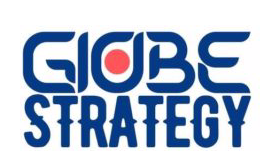Edward Chamberlin published the foundations of monopolistic competition in his 1933 book entitled The Theory of Monopolistic Competition. It is considered by some economists to have the same stature as John Maynard Keynes’s General Theory in revolutionizing economic thought in the 20th century. [8] The idea behind monopolistic competition is simple in form and powerful in practice.
Monopolistic competition involves many buyers, many sellers, and easy exit and entry, with slightly differentiated products. The sellers in these markets sell products that are closely related, but not identical. They have features that differentiate them from the competition. Usually, the buyers and sellers also have good information on the attributes of the products and the prices of the products in the marketplace. Indeed, most products and services are sold in markets characterized by monopolistic competition. The list includes jewelry, movie production, food, entertainment, many electronic gadgets and components, some durable goods, books, crafts, soda, houses, cars, consulting businesses, software, game consoles, restaurants, bars, and so forth.
A monopolist is a price setter and a business competing in a perfectly competitive market is a price taker. Most businesses strive to be price setters within a certain range of prices by offering a product that is closely related, but not exactly identical to other products in the market. The key strategy for competing in markets characterized by monopolistic competition is to offer products that are differentiated. The products are sort of quasi-substitutes, but they still resemble the original product or service. For example, Apple developed the iPod to compete with existing MP3 players.
According to standard economic theory, a purely competitive market has many buyers and sellers and each individual firm is a price taker. In essence, consumers and producers determine the market price for a product or service. In perfectly competitive markets, there are many sellers and buyers, and entry into and out of the market is easy. In a perfectly competitive market, companies sell their products at prevailing market prices where marginal revenue equals marginal cost. In actuality, every business would like to control the market, set the price, and be a monopolist. All businesses should strive to compete as a monopolist, even if it is in the short term. The goal is to rake in lots of money in the short term because your company is the only seller of a slightly differentiated product or service. [9] This will be short term (unless you have an exclusive patent on a product, own a large oil field, or have exclusive rights to providing cable or utility services) because successful products will always attract the competition. The only way to compete in contemporary markets is to become a serial entrepreneur, to constantly refine and reposition your products, and to function as a near-monopolist in the short term.
Source
Developing New Products and Services by the Saylor Foundation: Available on http://www.saylor.org/site/textbooks/Developing%20New%20Products%20and%20Services.pdf
